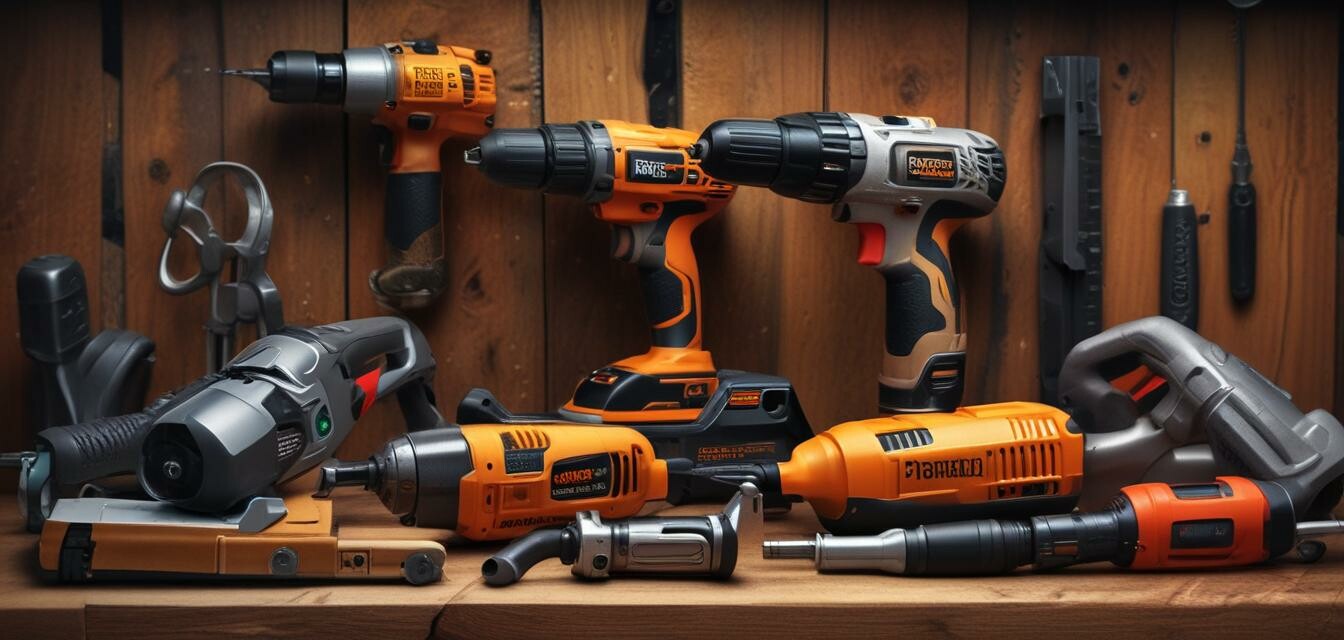
The Evolution of Cordless Power Tools
Key Takeaways
- Modern cordless power tools have seen significant advancements in battery technology, design, and functionality.
- Emerging trends like IoT integration and smart technology are set to revolutionize the portable power tool industry.
- Staying updated with these advancements can greatly enhance your effectiveness and safety on the job.
When it comes to power tools, cordless options are becoming essential for contractors and DIY enthusiasts alike. Their convenience, portability, and growing power make them a staple in modern toolkits. This article will analyze the advancements in cordless power tools and what innovations are on the horizon.
History of cordless power tools
The journey of cordless power tools began in the mid-20th century when the first battery-operated tools hit the market. The key milestones in this evolution have significantly shaped the tools we utilize today.
| Year | Milestone |
|---|---|
| 1961 | The first practical cordless drill was introduced. |
| 1980s | Nickel-cadmium (NiCd) batteries became popular, improving tool performance. |
| 1990s | NiMH batteries entered the scene, offering longer run times. |
| 2000s | The lithium-ion battery revolution began, offering higher energy density. |
| Present | Smart technology and connectivity have started to redefine tool capabilities. |
Key advancements in cordless power tools
As technology advances, so do cordless power tools. Below are some of the noteworthy advancements that have defined their evolution:
- Battery Technology: The shift from NiCd to lithium-ion batteries has dramatically improved battery life, reduced charging times, and provided consistent power output.
- Lightweight Design: Modern materials have made tools lighter and easier to handle, reducing user fatigue during prolonged use.
- Brushless Motors: These motors offer higher efficiency, longer lifespan, and less maintenance, making them an ideal choice for professionals.
- Ergonomic Improvements: New designs provide better grip and comfort, enhancing user experience and safety.
- Smart Features: Tools with built-in sensors can provide performance data, indicating when maintenance is required, or integrating with mobile apps for added functionality.
Emerging trends in the industry
The future of cordless power tools is bright, with several emerging trends expected to shape the industry further. Here are a few trends to watch:
- IoT Integration: The Internet of Things (IoT) is expected to completely change how we interact with tools, allowing for real-time data and monitoring.
- Increased Battery Efficiency: Ongoing research in battery technology will lead to even longer lifespans and faster charging times.
- Enhanced Safety Features: Tools will incorporate features such as automatic shut-off and improved sensor technology for hazard detection.
- 3D Printing: Customizable tool components will become mainstream, allowing for personalized tools without the added costs of traditional manufacturing.
- Environmental Sustainability: The push for sustainable materials and production methods will influence future tool designs and manufacturing processes.
Tips for choosing cordless power tools
As you explore which cordless power tools to invest in, consider the following tips:
- Evaluate your specific needs based on the types of projects you typically undertake.
- Look for tools with longer battery life and faster charging times.
- Consider tools with interchangeable batteries in case you upgrade in the future.
- Read reviews and comparisons of different brands and models.
- Stay up-to-date with the latest advancements in the power tool industry by frequently visiting our news and trends section.
Conclusion
The evolution of cordless power tools has profoundly impacted the construction and DIY industries. With continuing advancement in technology and features, these tools are more efficient, reliable, and user-friendly than ever before. By staying informed about the latest trends and developments, contractors and DIY enthusiasts can make more informed choices about the tools they use. For more insights, check out our buying guides which can help you select the best tools for your needs.
Pros
- Enhanced portability allows for use in various locations.
- Reduced cords minimize trip hazards and improve workflow.
- Advancements in battery technology lead to longer usage times.
Cons
- Higher initial cost compared to corded options.
- Battery weight can affect tool balance.
- Limited run time compared to corded tools if not adequately managed.
